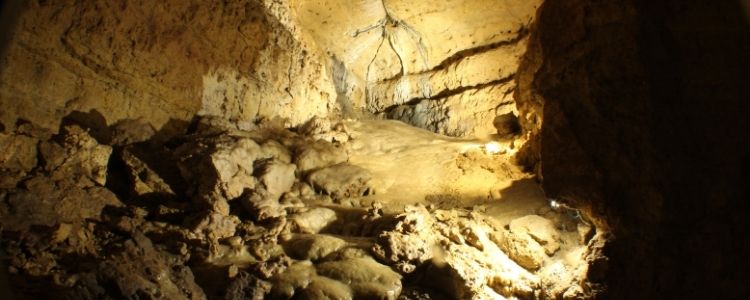How did the rock come to be here? Long ago, there was a shallow body of water here called the Ordovician Sea. All of the sediments from that sea formed the 400 to 500-million-year-old limestone bedrock layers all around us.
A fossil is the remains, impression, or trace of a living thing from the distant past. Looking back and directly above the last stalagmite, you might catch a glimpse of a Giant Cephalopod fossil, a squid of a bygone era that had a cone-shaped shell.

